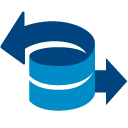
WebP is a modern image format that provides superior lossless and lossy compression for images on the web. Using WebP, webmasters and web developers can create smaller, richer images that make the web faster.
WebP lossless images are 26% smaller in size compared to PNGs. WebP lossy images are 25-34% smaller than comparable JPEG images at equivalent SSIM quality index.
Lossless WebP supports transparency (also known as alpha channel) at a cost of just 22% additional bytes. For cases when lossy RGB compression is acceptable, lossy WebP also supports transparency, typically providing 3× smaller file sizes compared to PNG.
How WebP Works
Lossy WebP compression uses predictive coding to encode an image, the same method used by the VP8 video codec to compress keyframes in videos. Predictive coding uses the values in neighboring blocks of pixels to predict the values in a block, and then encodes only the difference.
Lossless WebP compression uses already seen image fragments in order to exactly reconstruct new pixels. It can also use a local palette if no interesting match is found.
A WebP file consists of VP8 or VP8L image data, and a container
based on RIFF. The standalone libwebp library serves as a reference
implementation for the WebP specification, and is available from
our git repository or as a tarball.
WebP Support
WebP is natively supported in Google Chrome, Firefox, Edge, the Opera browser, and by many other tools and software libraries. Developers have also added support to a variety of image editing tools.
WebP includes the lightweight encoding and decoding library libwebp
and the command line tools cwebp and dwebp for converting
images to and from the WebP format, as well as tools for viewing, muxing and
animating WebP images. The full source code is available on the
download page.
WebP Converter Download
Convert your favorite collection from PNG and JPEG to WebP by downloading the
precompiled cwebp conversion tool for Linux, Windows or Mac OS X.
 What is YQL?
What is YQL? xRTML allows you to build real time enabled websites very easily in an html like language. With APIs for all the major server side languages such as ASP.Net, PHP, JSP and more.
xRTML allows you to build real time enabled websites very easily in an html like language. With APIs for all the major server side languages such as ASP.Net, PHP, JSP and more.
 Home
Home